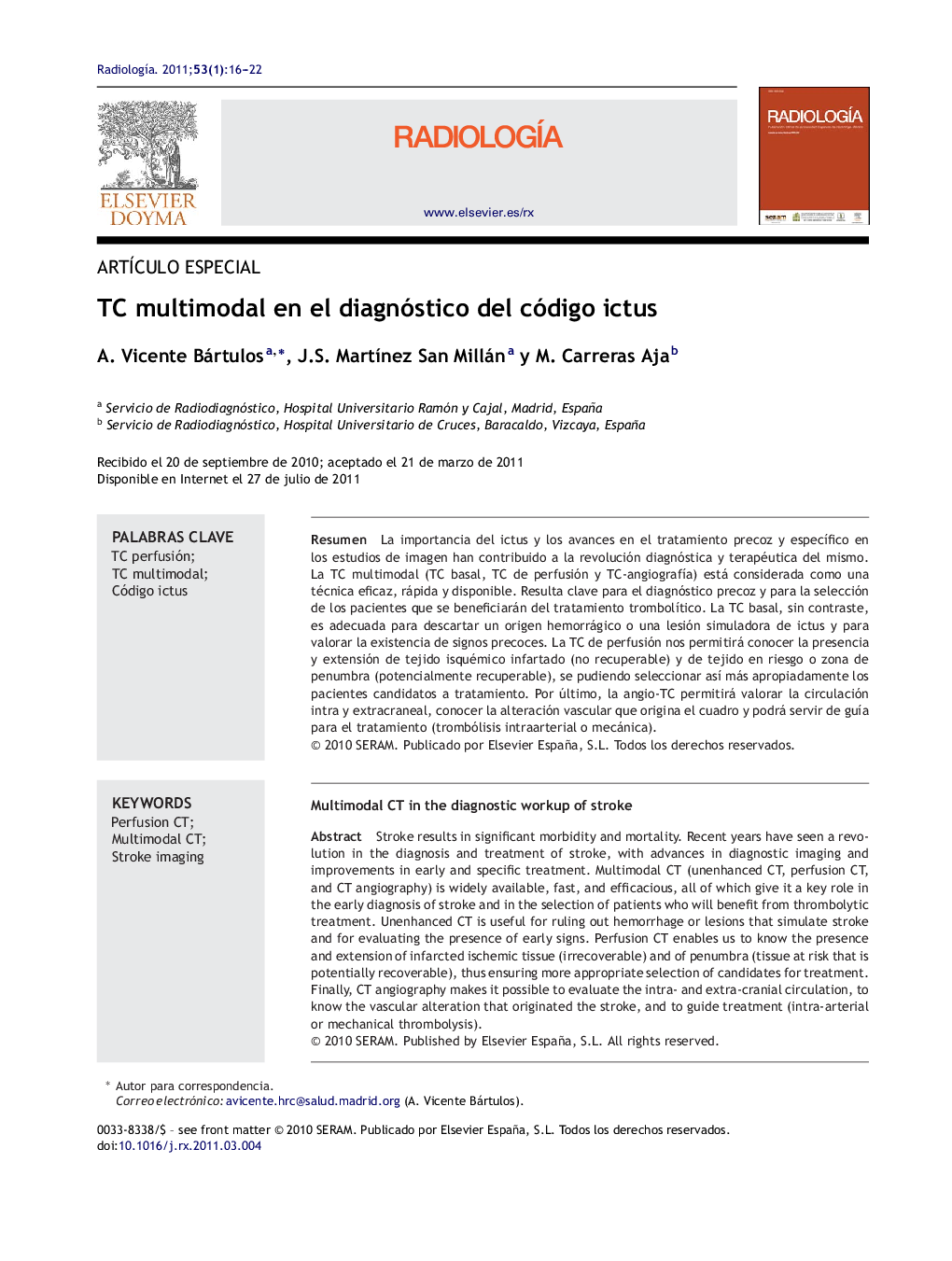| Article ID | Journal | Published Year | Pages | File Type |
|---|---|---|---|---|
| 4245771 | Radiología | 2011 | 7 Pages |
Abstract
Stroke results in significant morbidity and mortality. Recent years have seen a revolution in the diagnosis and treatment of stroke, with advances in diagnostic imaging and improvements in early and specific treatment. Multimodal CT (unenhanced CT, perfusion CT, and CT angiography) is widely available, fast, and efficacious, all of which give it a key role in the early diagnosis of stroke and in the selection of patients who will benefit from thrombolytic treatment. Unenhanced CT is useful for ruling out hemorrhage or lesions that simulate stroke and for evaluating the presence of early signs. Perfusion CT enables us to know the presence and extension of infarcted ischemic tissue (irrecoverable) and of penumbra (tissue at risk that is potentially recoverable), thus ensuring more appropriate selection of candidates for treatment. Finally, CT angiography makes it possible to evaluate the intra- and extra-cranial circulation, to know the vascular alteration that originated the stroke, and to guide treatment (intra-arterial or mechanical thrombolysis).
Related Topics
Health Sciences
Medicine and Dentistry
Radiology and Imaging
Authors
A. Vicente Bártulos, J.S. MartÃnez San Millán, M. Carreras Aja,
